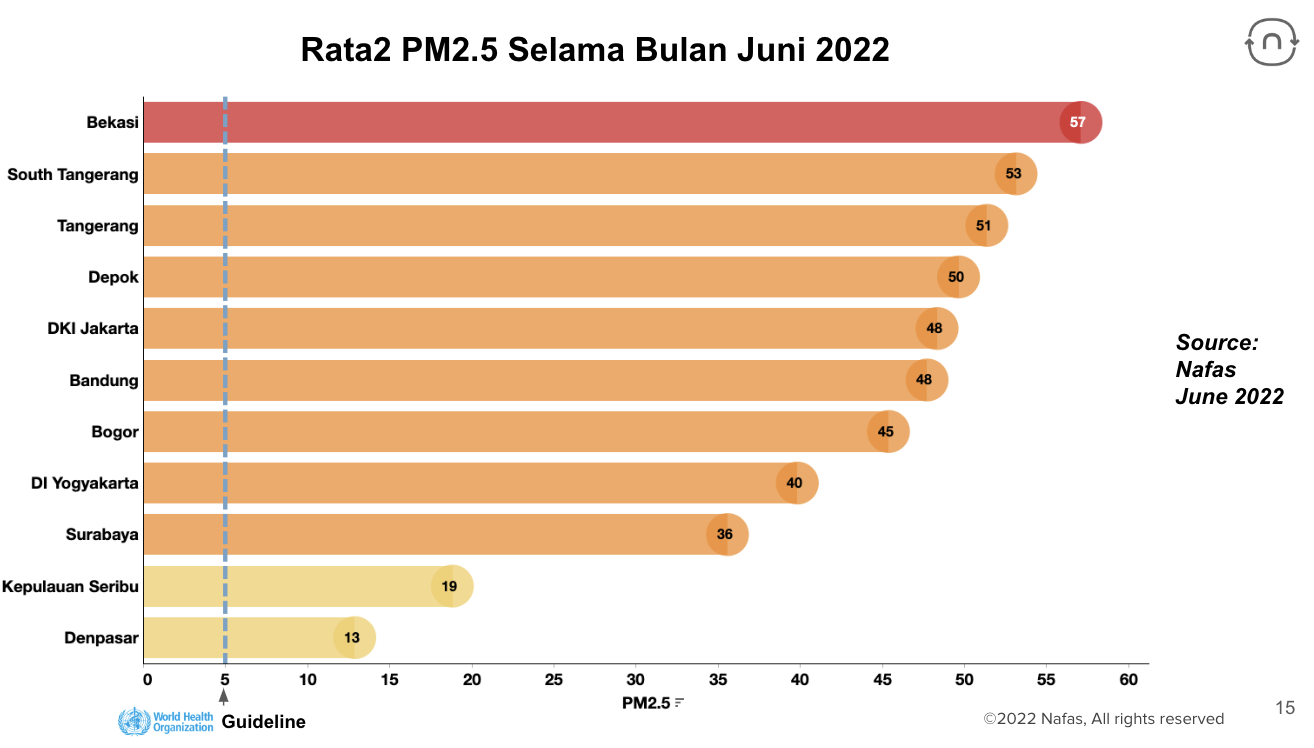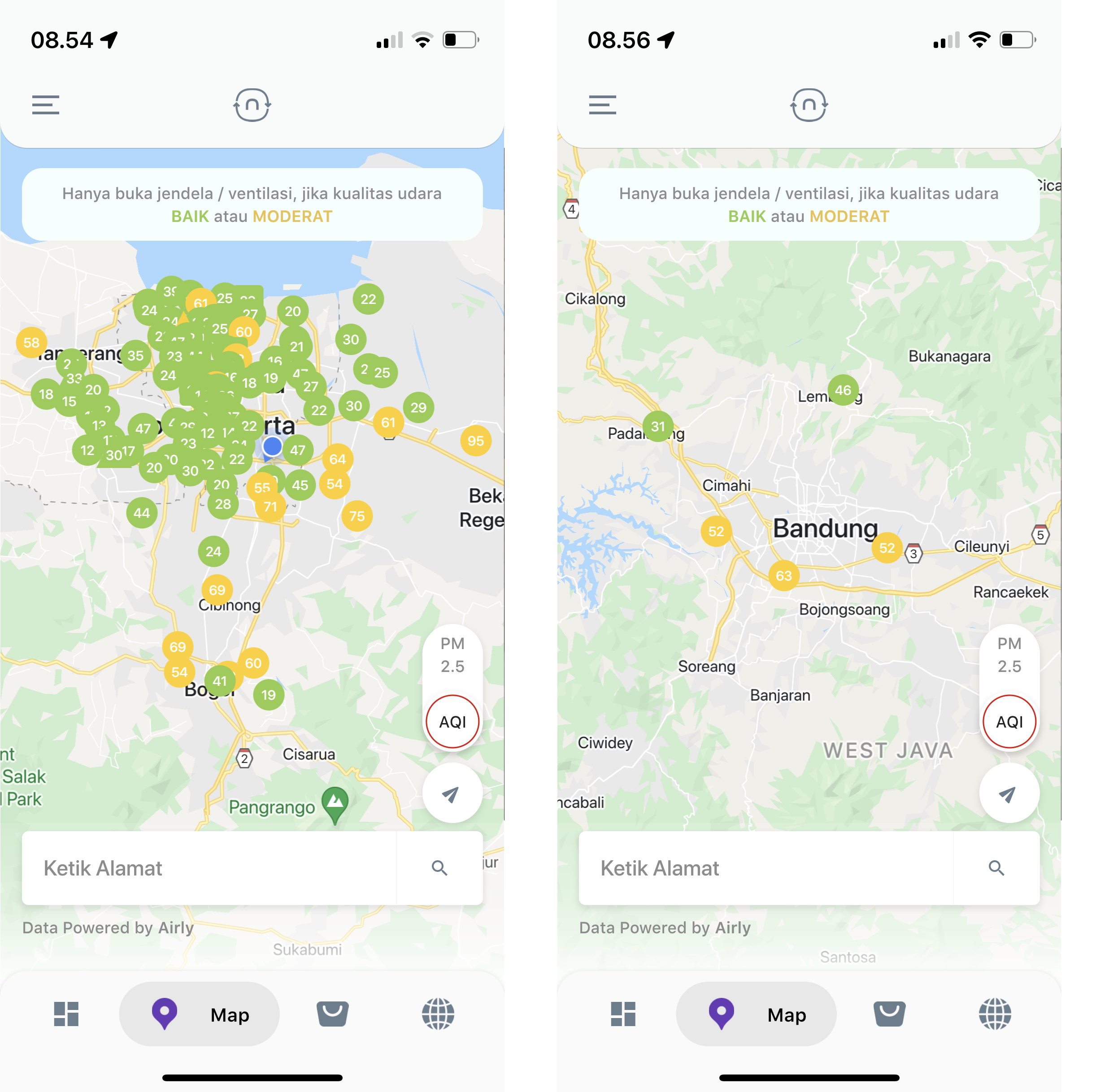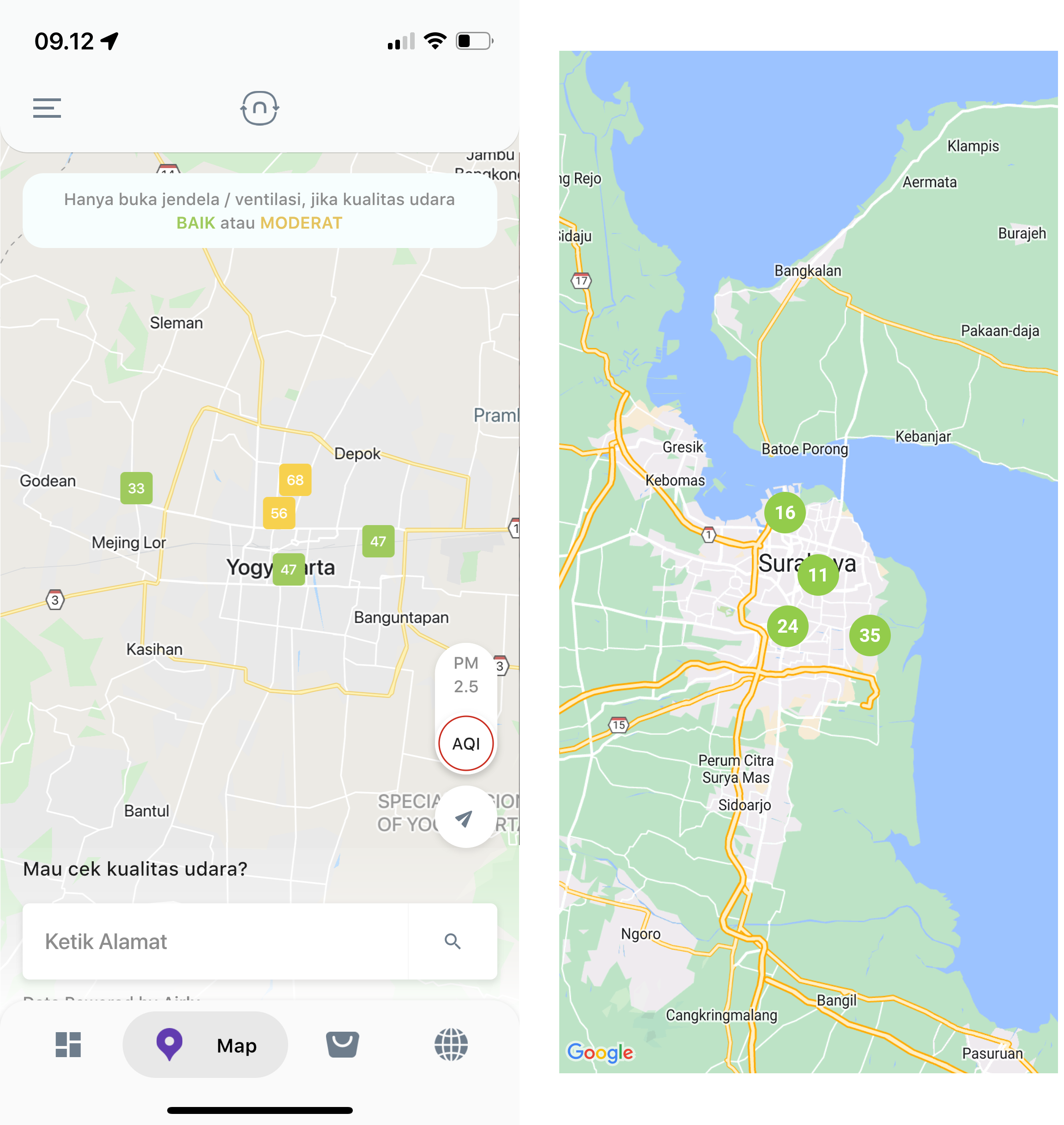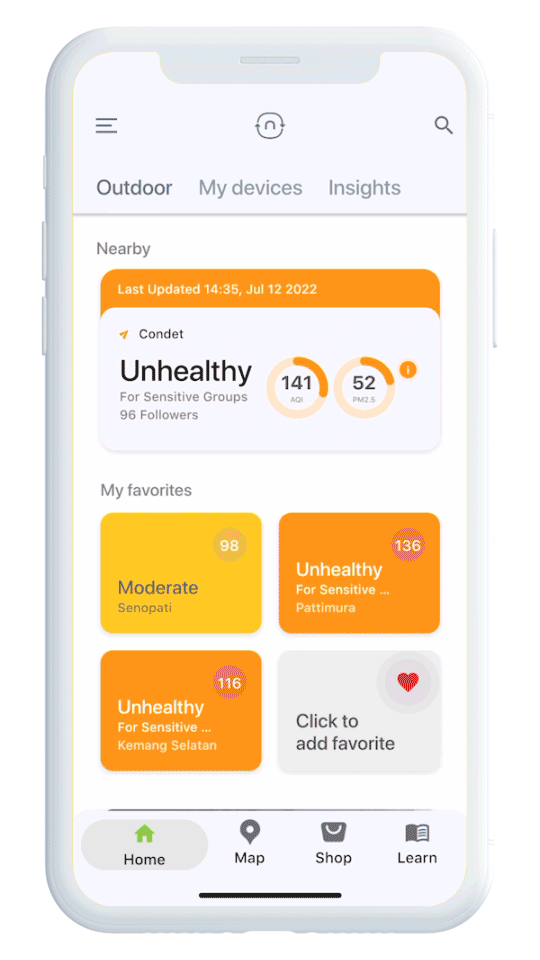How does air pollution affect the baby sunbathing?
We all need some sun exposure. As you may already know, sunlight exposure has lots of health benefits as it helps the body produce vitamin D. Since vitamin D is vital for supporting bone health, sunlight exposure is mandatory at all ages.
If you are a parent, some of you may already know that babies also need sunlight exposure to support their body health. Not only to provide warmth, but the baby’s morning sunbathing may also increase vitamin D, reduce bilirubin, and increase insulin, serotonin, and melatonin. Vitamin D promotes bone formation and may help prevent bone disorders by facilitating calcium absorption.
Despite these benefits, sunbathing a baby should be done carefully. Indonesian Pediatric Doctor Association recommends that babies are sunbathed in clothes with some of the skin shown in 40% and keep the time short under 30 minutes. About 30 minutes before sunbathing, put on sunscreen of SPF 15 at a minimum on the babies’ skin. Also, do it between 7 and 10 am or 4 pm and 6 pm to avoid the highest radiation of UV/B rays. A child with a family history of skin cancer, fair-skinned, and has freckles/brown spots on the face should be more careful.
But, have you noticed that there is one glaring problem missing in the safety equation? Yup, it is the air quality around us.
Newborns breathe a higher concentration of pollution than adults
PM2.5, particulates with a diameter of 2.5 micrometers, which are components of air pollution, can be very harmful effects on humans, especially vulnerable groups such as young children and infants. 
UNICEF also has highlighted that children aged 0-5 are most at risk from air pollution. Newborns breathe more frequently and inhale a higher concentration of pollution per kg of bodyweight. There is something called tidal volume, which is the volume of air inhaled or exhaled in a single breath. The tidal volume for infants is 8.4 mL/kg, while the tidal volume for healthy adults is 7 mL/g. Inhaled PM2.5 can affect the baby because their lungs are not yet fully developed and are still immature.
See? These are why babies are highly susceptible to air pollution.
The danger of our newborns breathing in more PM2.5
There is quite a lot serious risk of our newborns breathing in more air pollution. The WHO recommends a yearly exposure of 5 μg/m3 of PM2.5, which was revised from 10 μg/m3. PM2.5 levels above this can cause many different short-term illnesses & long-term illnesses.
Nearly 500,000 newborns worldwide died from air pollution in 2019. Inhaled PM2.5 in babies can increase the risk of lower IQ, lower brain development, asthma and poor lung health, and Attention-deficit/hyperactivity disorder (ADHD). A Taiwan study in 2022 discovers that PM2.5 exposure of 16 μg/m3 for children under 3 years old increases the risk of ADHD. This increases significantly at an exposure >50 μg/m3
PM2.5 can harm the baby, even in the womb
In fact, high exposure to PM2.5 during pregnancy is also a huge risk to the future baby. In pregnant women, high exposure to PM2.5 exacerbates asthma and this can be dangerous. Asthma can cause preeclampsia in pregnant women, a condition that causes high blood pressure and poorer liver and kidney function. Untreated asthma can cause your baby to suffer from lack of oxygen, premature birth, low birth weight, and leading to poor growth.
Research has also found that PM2.5 can breach the newborn placenta and it can increase the baby’s chances of developing asthma later in life. Other alarming studies also found black carbon present in newborn placenta and prenatal PM2.5 exposure have been linked to a higher risk of premature birth, low birth weight, autism disorder, and neurological issues. A 2020 study in Mexico City also found that moms in the first trimester who were exposed to PM2.5 between nearly 22 - 23 μg/m3 had kids with a higher risk of lower test scores, functional scores, and depression when they reached 4 - 6 years old.
An interesting study mentioned that air pollution causes nearly three million premature births each year. According to FKUI, Indonesia has 5th most cases of premature birth in the world. A study from the US showed that moms with exposure to PM2.5 levels above 15 μg/m3 during their pregnancy had 19% higher risk of premature birth. In Indonesia, the standard value of air quality for PM2.5 based on Government Regulation Number 22 of 2021 is 15 μg/m3. However, the concentration of PM2.5 in our air often exceeds 15 μg/m3 – we'll see how high it will be to keep going.
Jakarta is one of the most air polluted capital city in the world
Earlier, the air quality data agency IQ Air ranked Jakarta as the most polluted city in the world. The data shows that Jakarta’s AQI is 193 on Monday morning, which is 27.4 times the World Health Organization's (WHO's) annual air quality guideline. Air pollution in Bandung and Surabaya is not that much better. In fact, here are the PM2.5 levels year to day for all regions of Nafas sensors. 
In order to keep things more recent, here are the PM2.5 levels for the last 30 days (June 2022). 
Air pollution can be the worst in the morning
This tiny particulate concentration is high during midnight, and it doesn't really get much better until around 10 - 11 AM. To help us keep the baby safe, it's important to use air quality data to decide when baby sunbathing should be done outside or inside. One of the things that Nafas discovered is that the worst air quality happens in the morning.
It actually peaks at 8 or 9 am, which is right in the middle of baby sunbathing.




You're probably thinking - Nah, impossible. It can't happen in my area.
Well, Nafas ran the numbers across 180 locations and the results are generally the same across every city (except Belitung). For those of you who gave birth recently, here's a look at the average PM2.5 levels by time for each region in the last 1 month.

So, does that mean that we should forever stay indoors with our babies? No, not at all. In fact, air pollution data like the one from Nafas can be used to find out times when it's really good to go outside. We've had a few times during the year where there is healthy air quality in the morning. The reason behind this healthy air quality is the weather and atmospheric conditions made air quality good around many of the regions in Indonesia. 

Protecting our little ones from air pollution while sunbathing the babies
As parents, we have the responsibility to create a safe environment for our children. While many things can influence the health of babies, air pollution is something you can learn to avoid. If you want to sunbathe the baby outside, aside from the safety recommendation from the Indonesian Pediatric Doctor Association we mentioned before, it is also better to check the outdoor air quality first.
You can use the Nafas app to know the air quality data. The Nafas app has an Alerts feature that will help you in understanding the air quality at the time according to your needs. With this feature, you can set the time you want for the baby sunbathing and the app will notify you the air quality at that time.
If pollution is too high, do the baby sunbathing indoors near the windows and with a purifier. You can use a HEPA Purifier to make indoor air quality healthy and to be an alternative for indoor baby sunbathing. With these tips, you can still maximize the benefits of baby sunbathing while avoiding the danger of air pollution to keep your loved ones safe and protected.
References:
Chang, Y.-C., Chen, W.-T., Su, S.-H., Jung, C.-R., & Hwang, B.-F. (2022). PM2.5 exposure and incident attention-deficit/hyperactivity disorder during the prenatal and postnatal periods: A birth cohort study. Environmental Research, 214, 113769. https://doi.org/10.1016/j.envres.2022.113769.
DeFranco, E., Moravec, W., Xu, F., Hall, E., Hossain, M., Haynes, E. N., Muglia, L., & Chen, A. (2016). Exposure to airborne particulate matter during pregnancy is associated with preterm birth: a population-based cohort study. Environmental Health, 15(1). https://doi.org/10.1186/s12940-016-0094-3
Doershuk, C., & Matthews, L. (n.d.). Airway Resistance and Lung Volume in the Newborn Infant. Retrieved July 10, 2022, from https://www.nature.com/articles/pr196915.pdf?origin=ppub
Impacts on Newborns | State of Global Air. (n.d.). Www.stateofglobalair.org. https://www.stateofglobalair.org/health/newborns
Malley, C. S., Kuylenstierna, J. C. I., Vallack, H. W., Henze, D. K., Blencowe, H., & Ashmore, M. R. (2017). Preterm birth associated with maternal fine particulate matter exposure: A global, regional and national assessment. Environment International, 101, 173–182. https://doi.org/10.1016/j.envint.2017.01.023.